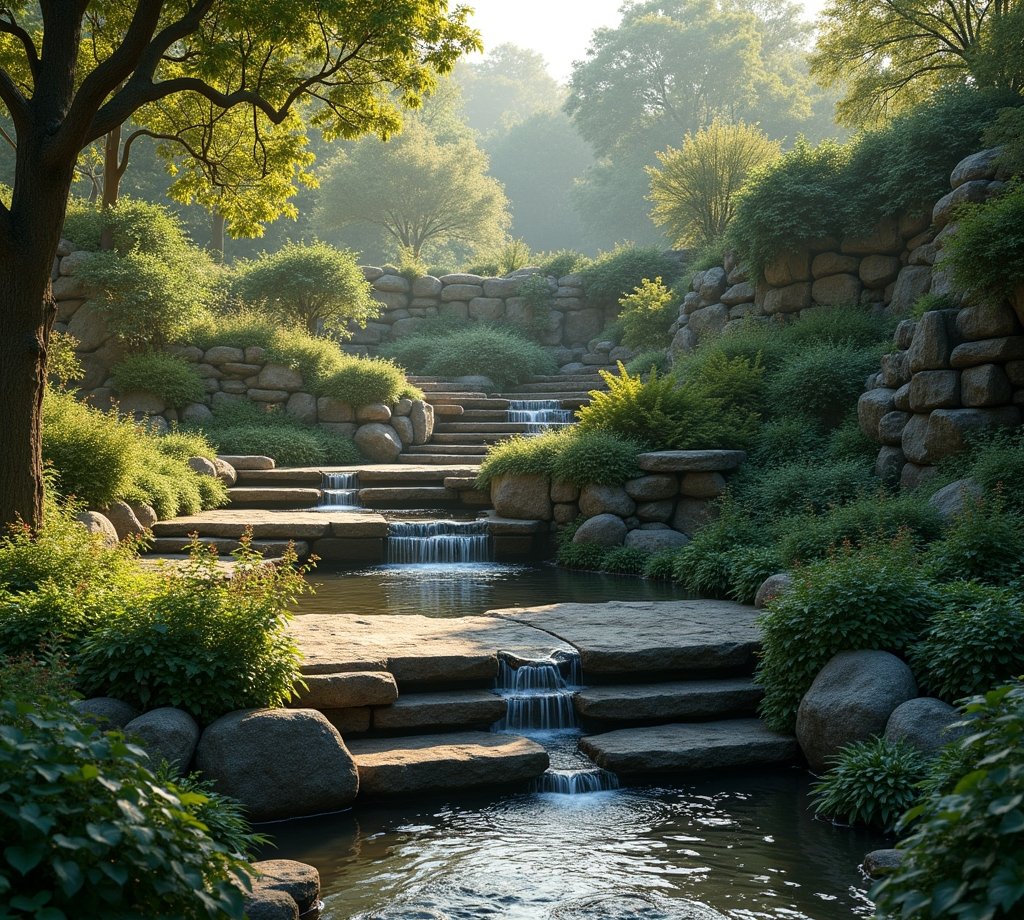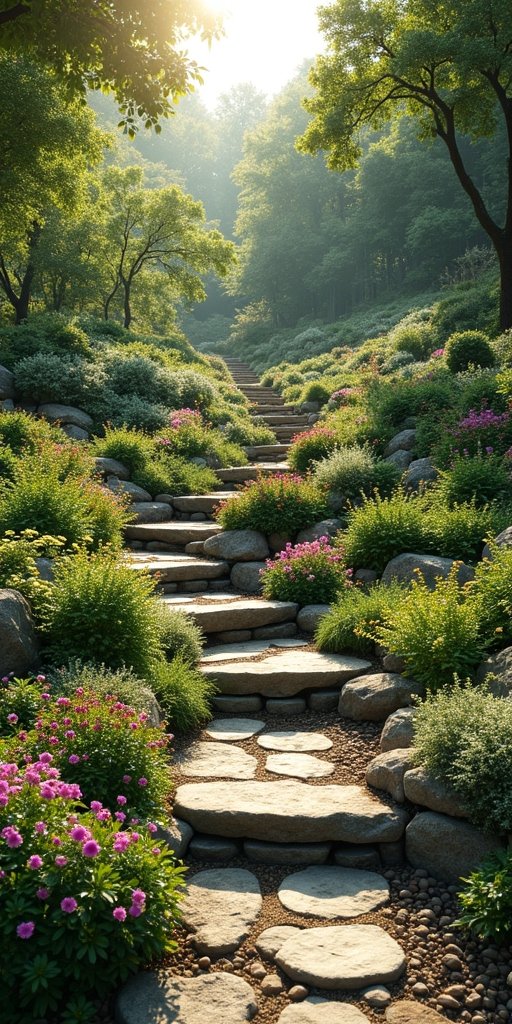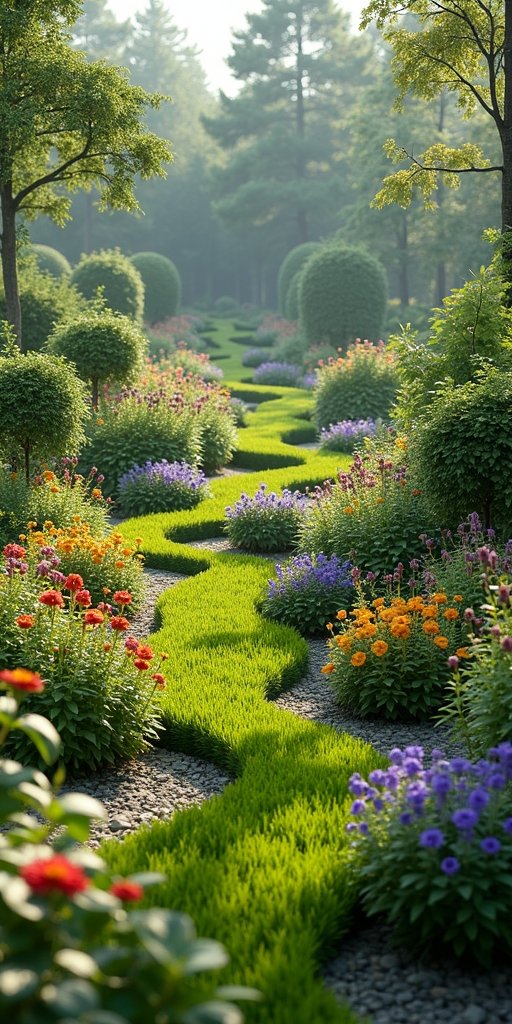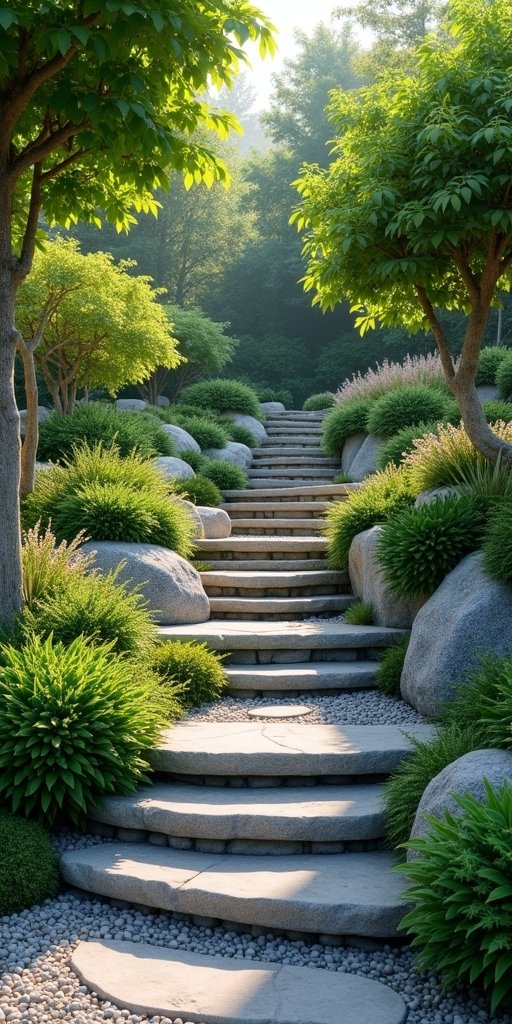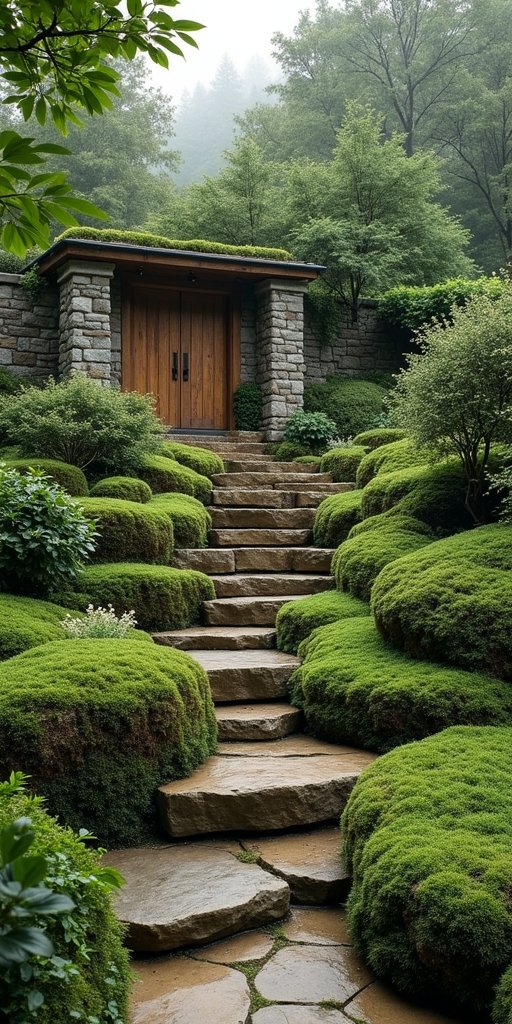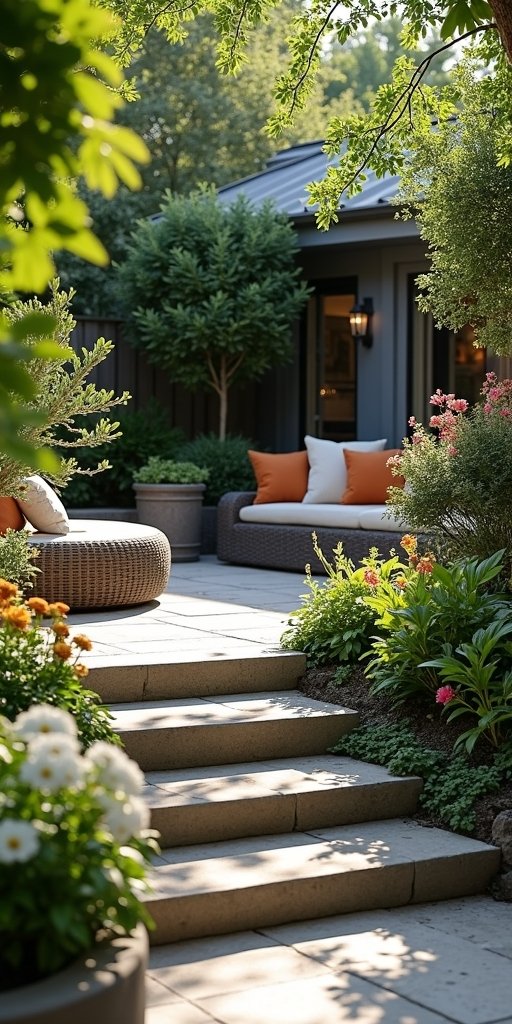A terraced garden is like a three-dimensional work of art that blends harmoniously into the landscape. Cleverly laid out levels and steps not only create more visual depth, but also additional space for creative design options. The different heights give the garden dynamism and create exciting perspectives that captivate the eye of the beholder again and again.
If you divide your garden into different levels, you can cleverly demarcate different functional areas from each other and at the same time create a clear structure. Whether as an elegant solution for a hillside garden or as a deliberately designed element in flat terrain – graduated garden design offers countless possibilities to turn your own green paradise into a unique retreat. With the right ideas and well thought-out planning, even a small garden can be turned into an impressive oasis.
Tiered garden design at a glance
The combination of different materials such as natural stone, wood or Corten steel for the gradations is particularly appealing. These can be planted harmoniously with climbing plants, hanging plants and upright perennials. Clever lighting of the individual levels creates an atmospheric garden landscape even in the evening hours, which invites you to linger.
Create terraced beds
During the installation, care should be taken to ensure that the retaining walls are solidly constructed in order to withstand the earth pressure. The individual terraces should be at least 60 cm wide to enable comfortable working. Good drainage is essential to avoid waterlogging. Planting can be done from top to bottom in height steps, with taller plants placed at the back and lower plants at the front.
Stepped beds for small gardens
The design can be individually adapted to the local conditions, whereby natural stones as well as wood or recycled materials are suitable as support elements. Herbs, vegetables and flowers can be combined particularly well in stepped beds, creating not only a productive kitchen garden, but also a visually appealing design element that enhances and structures the small garden.
Create tiered water features
The design of tiered water features requires careful planning of the individual elements. From the pump performance to the selection of materials to the positioning of the different levels, everything must be coordinated. Natural stones, gravel and waterproof materials form the basis for a harmonious overall picture, while aquatic plants and LED lighting can set additional design accents.
Multi-stage plant combinations
The advantages of this planting method are manifold: it provides a habitat for various insects and small animals, reduces evaporation through mutual shading and effectively prevents the emergence of unwanted wild herbs. In addition, clever plant selection can create attractive garden images all year round by combining plants with different flowering times, interesting leaf structures and winter aspects.
Stairs and paths in the stepped garden
The well-thought-out pathway allows garden visitors to explore every corner of the complex and discover new perspectives all the time. Viewpoints have been created at strategic points from which you can enjoy a magnificent view over the entire stepped garden and the surrounding landscape. The small hidden niches and resting places that invite you to linger are particularly charming.
Natural stone walls for garden gradations
The professional construction of a natural stone wall requires craftsmanship and thorough planning, from the preparation of the foundation to the correct layering of the individual stones. Particularly important are the right drainage to prevent water damage, as well as the statically correct arrangement of the stones so that the wall remains stable for many years even in frost and changing weather conditions and can optimally fulfil its function as a supporting element.
Step-by-step slope planting
Different plant species can be chosen for each level, with taller plants such as shrubs and small trees being placed in the rear areas and lower perennials and ground cover in the front area. This arrangement not only creates a visually appealing depth effect, but also enables optimal sun use for all plants.
Tiered seating in the garden
The terraced arrangement is perfect for gardens on a slope, but can also be realized on flat terrain. Clever lighting along the steps creates a particularly atmospheric atmosphere in the evening. The raised seating areas also provide a better overview of the garden and can serve as a natural separation between different garden areas.

